We have a couple of bathrooms each containing five 100W halogen 78mm R7S light bulbs. Those things get hot; it’s like having a heater in there, even in the summer! Plus burning 500 watts is a great way to jack up the electricity bill. Hence I’ve been looking for 78mm R7S LED light bulb replacements.
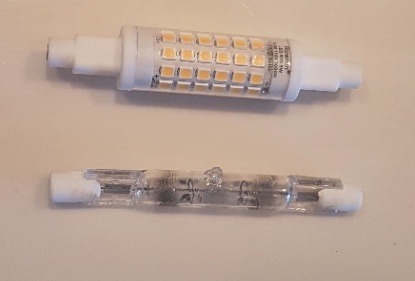
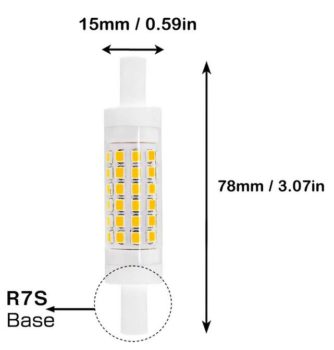
From Amazon I purchased a dozen “Rowrun” dimmable 3000K (soft-white) 5W 78mm R7S LED bulbs. They installed easily; a good fit mechanically. The 3000K colour was nice and they ran cool. But I quickly noticed an odd “shimmering” effect of their light output. This shimmer was noticeable at full brightness, and became more so as the lights were dimmed (using an LED compatible dimmer). My wife complained that the new lights gave her a headache. So I wanted to find out what was going on.
I took a solar cell from an old garden light, and used it as a light sensor. Which I then attached to an oscilloscope, so I could measure the light being produced by the bulbs.

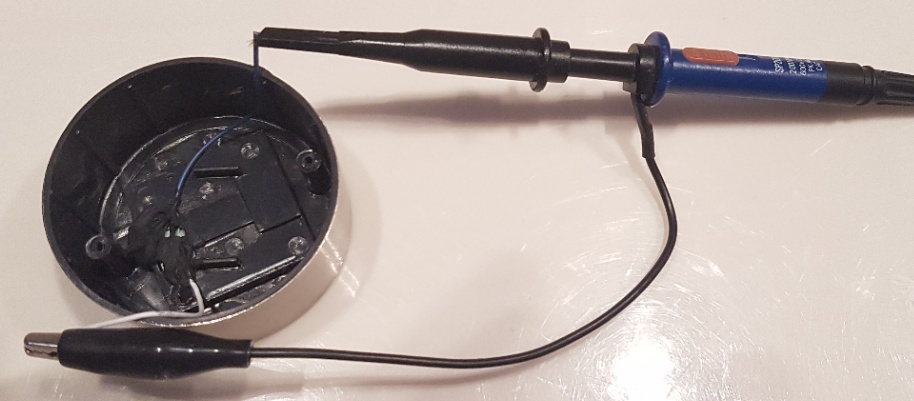
With the LED lights at full brightness, this is what I discovered:

You can see the dips in the light output, at a rate of 120 Hz (double the line frequency, or if you prefer, 120 Hz is the line’s zero-crossing frequency). This 120 Hz high-frequency flickering is too fast for the eye to consciously notice, but it produces the shimmering effect.
When the light is dimmed, the 120 Hz flickering effect becomes slightly more “consciously” noticeable. It disturbs some people more than others. I notice it a bit, but it bothers my wife a lot.
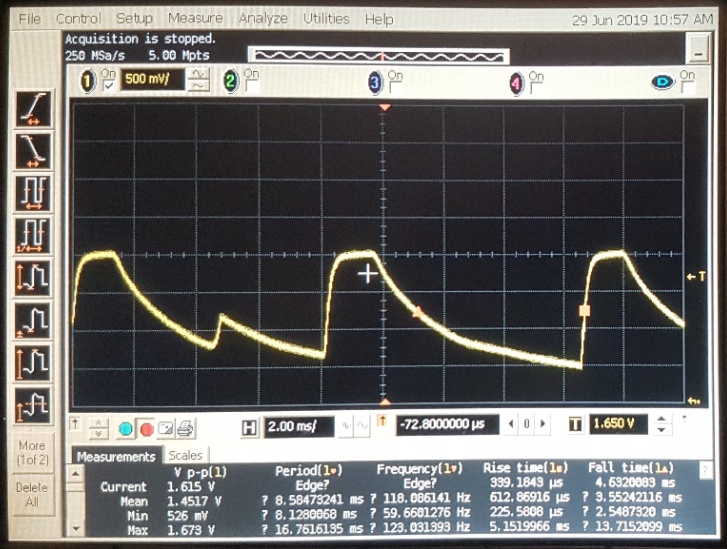
Fairly obviously, this LED bulb apparently has no circuitry to stabilize its light output. I’ve seen other LED bulbs which smoothly adjust their light output based upon the dimming duty-cycle, but this one simply chops its light output in tune with the line voltage. As the line voltage passes through zero, the light goes out, then turns back on when the line voltage rises again. Resulting in this 120 Hz flickering.
By comparison, here’s the light output from a halogen R7S bulb, dimmed to about 50% of its output:
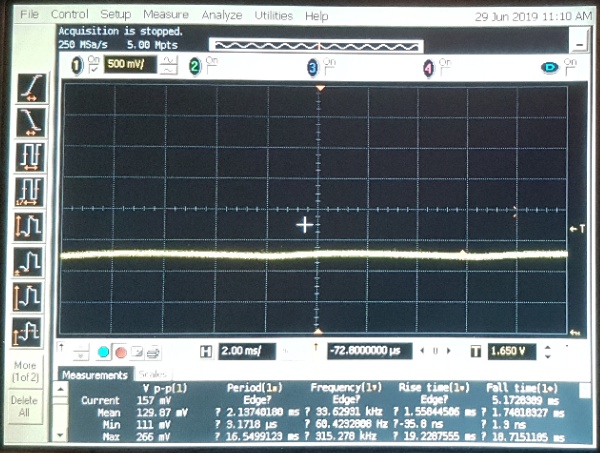
Notice that it’s almost flat, with just a tiny amount of 60 Hz ripple on it. This is due to the properties of the filament in the halogen bulb (once it’s hot and glowing it’s slow to respond, giving it a stable light output).
So that was a very interesting, if a bit expensive, experiment. The LED bulbs have been removed and the halogens put back. I wish this kind of information was provided with LED bulbs. The colour temperature is nice and important, but this 120 Hz shimmering that some LED bulbs exhibit is important as well.
